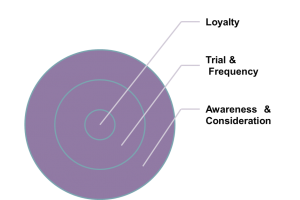At yesterday’s commencement address at Monmouth, keynote speaker Dr. Ambrose quoted a Wall Street Journal article about the lack of excitement employers have for today’s business graduates. According to the article, business graduates cannot do the critical thinking, writing, and cross discipline communication that companies need to be more productive and successful. Managers must be able to bring together engineers, scientists, creative people, and production personnel and help people efficiently and effectively work together.
With mounting evidence that business educators are losing touch with the needs of today’s companies, I have embarked on a new challenge to head up a business school at Jacksonville University in Florida.
After 11 successful years at Monmouth guiding business students to be more productive and relevant, my students, friends, and associates asked the following questions:
What first attracted me to the Dean’s position at Jacksonville’s Davis College of Business (DCOB)?
JU is at the tipping point with its business program and needs leadership to take the team to next level. It is also great opportunity to grow the JU brand and expand the international reach of the DCOB. Twenty years ago, the DCOB leadership developed an excellent Flex/Evening MBA program and attracted some of Jacksonville’s best and brightest aspiring business leaders. The main challenge is to remain attractive and relevant to the rising generation of managers and entrepreneurs. With a talented group of faculty and staff, JU business graduates will excel beyond our competition in critical thinking, writing, and cross discipline communication that companies need to be more productive and successful.
What do you mean by attractive and relevant?
Attractive and relevant means adapting JU’s program to the needs and aspirations of today’s business leaders. It is not enough to prepare students for their next job. We know what management consultants, auditors, real estate developers, or loan officers do today because they are our alumni and speakers in the classroom. The challenge is to provide a program of study and coaching that is relevant enough to help our candidates qualify for the next promotion and prepare the graduate for a lifetime of success.
Everyday we use Google for information searches and Microsoft Office for many business oriented applications or tasks. What happens when the accounting software changes or the current tax code goes away? Which employees can adapt to these changes and make lemonade from the lemons? Graduates that can do the critical thinking, writing, and cross discipline communication.
We have to teach the best ways to utilize spreadsheets or manage investor expectations while preparing our graduates to solve problems and take advantage of opportunities unknown to all of us today. If you would have asked someone if Apple would be the dominant music company ten years ago, everyone would have laughed. No one is laughing today. With i-phones, i-pads, Apple TV, and i-tunes representing a huge percentage of royalties to music artists, Apple is on the verge of becoming what Hollywood was to entertainment in the 40’s and 50’s.
The DCOB program must be compelling intellectually, socially (enjoyable and rewarding from the networking perspective), and provide a substantial return on the candidate’s investment. By substantial, I mean an ROI that is ten to twenty times more than the original investment. That roughly $20-50,000 more annually for the average graduate over 40 years compared to those that do not graduate from a university. It could mean an incremental $2,000,000 in income plus so much more in terms of “connecting knowledge from seemingly unconnected topics and news events”.
What is the expected ROI on a MBA degree from the DCOB?
I am not sure yet but those investing in the Master’s program will gain incrementally in comparison to the figures I discussed for bachelors degree graduates. We are confident JU has a solid MBA curriculum and faculty team. But we cannot be satisfied in good or very good.
My job will be to make sure the perceived and real value of the JU MBA degree grows and its reputation is enhanced. The most important factor in enhancing our reputation will be our graduate’s successes. But it is not easily measured. Another way to measure the quality of the business program is to look at the qualifications of individual faculty and the DCOB curriculum. One concrete way any prospect can compare one business program to another is to seek a school that has been carefully screened and audited by a trusted source. It’s why accreditation matters, because every business school claims their program and graduates they are equal to or better than the best programs.
At DCOB we maintain the highest accreditation with most authoritative source in business education, the Association of American Colleges & Schools of Business (AACSB). AACSB is the gold standard in a business education. To obtain the accreditation, the school must meet stringent standards such as best practices in teaching, research, and career preparation. It is expensive to maintain a topflight program, JU has made that investment but the majority of business programs including famous schools such as the University of Phoenix or other business programs have not. Only 15% of American business programs are AACSB accredited and less than 15% of business graduates come from AACSB accredited schools . Therefore the DCOB is in an elite group and deserves your careful consideration.
Given the investment in time, effort, and tuition required to complete a Masters or even your undergraduate business degree, the return on investment (ROI) must be both immediate and long-lasting. Even with financial aid, that’s a $50-100,000 question that every prospect asks. It has to make sense financially. That requires a robust curriculum with faculty trainers that offer both depth and breadth. It also requires programs that work with current career aspirations so that you can continue in your current position if you so choose.
How do we do more? There are so many examples but its one thing to obtain the skills that are immediately valuable for say an accounting graduate to begin conducting internal audits of financial performance, yet another to make value judgments in the area of business ethics. As an auditor, you need to have both skills and the problem solving skills to get others to consider and eventually follow your lead.
As business educators, we never lose sight of the life-long dividends a quality business program provides. Events in the world can change our perspective. With business ethics I believe there are some absolutes, but the rules determine the outcomes.
What makes being the Dean at the Davis School such a great challenge?
Business education is a mature product and with so many competitive evening and online programs there are few barriers in the way of any college starting a business program. It appears to happen every day. Despite the growing number of competitors, the DCOB will become the best program in the region as we can meet the challenge of continuous improvement and innovation. I personally need to get out into the business community and learn more about the current problems and challenges facing businesses today.
At JU, we must adapt our product and curriculum as necessary to meet the needs of employers and the communities we serve.
Change is necessary and it requires a champion. My plan is support those champions and fight against the nay sayers—those that say we shouldn’t try to change or incremental improvement is not worth the effort. I do not want to change for change sake –improvement is a matter of survival. We can’t afford to focus on our traditional competitors in Central and Northern Florida or even those in the South East region. It’s an international market and we are just as likely to lose an international business student to University of South Carolina as Fudan University in Shanghai. In business, we must have a great answer for the classic question, “why should I care?” and “how are you better than _____?” As Dean, I must have a great answer for those questions. All I could tell you now are the proper ingredients are in place at JU. Prior deans took bold steps. The first was hiring excellent young faculty, starting the process towards AACSB accreditation, while maintaining a quorum of the best senior faculty.Good examples of the outstanding faculty are Dr. Matrecia James in Management or the more senior leadership from Professor Sepehri in International Business or Dr. Boylan in Finance & Accounting. They have not only succeeded in driving student engagement and success, they built outstanding programs. Check out their profiles at www.ju.edu
What is my definition of success? At DCOB, we want our brand to mean something special. It should translate to “seeking to obtain the gold seal” of business confidence for anyone with high aspirations. If you are willing to pursue advanced study or advance yourself within your profession, we want to meet you. Our curriculum will emphasize learning beyond the classroom. DCOB fosters leadership skills, practical experience and social responsibility. A dedicated faculty and staff will provide unparalleled personal and career guidance, while an active alumni community supports our students through scholarships, internships and career networking opportunities. What drives them to success-their high aspirations. Their passion and smarts propel them towards a rewarding career. It is our desire to do more than survive–we want our graduates to prosper and thrive. Our aspirations are the most powerful motivators towards success.
Despite these aspirations and yearnings to prosper and make a difference, recent graduates face great challenges/barriers similar to entrepreneurs including high unemployment and taxes, commercial restraints by government, and limited time and capital. If it was easy to win at business, you wouldn’t need us. But with the help of great teachers and mentors at DCOB your odds for success will improve dramatically.


